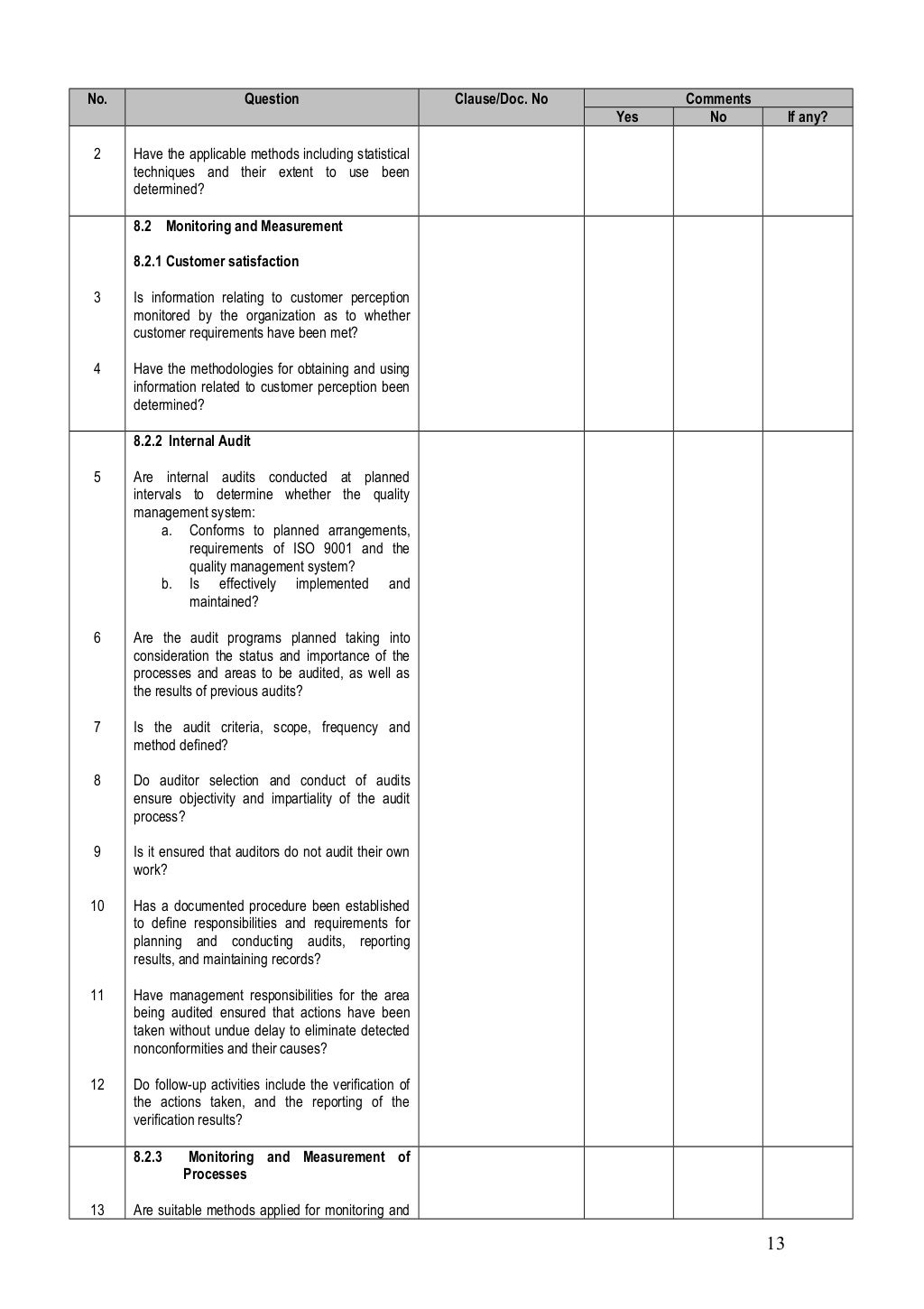



Your internal audit program should consider the following: Have frequent or significant changes to processes and product.You experience internal or external nonconformities.Consider adjusting the audit frequency and perhaps even the audit scope, of specific processes or group of processes, when: The most common time frame is six months. In determining the time frame for your audit program, you should consider organization size, complexity of product and processes, health of the QMS, customer, registrar and regulatory requirements, etc. Is the organization practicing what it described in its documentation? Evaluating the extent to which audit criteria are fulfilled involves an assessment of both implementation and effectiveness. The evidence must be based on fact and may be obtained through observation, measurement, test, or by other means. Audits obtain objective evidence of conformity with requirements. The procedure must address the responsibilities for conducting the audits, ensuring independence, recording results, and reporting to management. Internal audits must be carried out to a procedure according to requirements given in clause 9.2 of ISO 9001:2015. For example, having responsibility for the work, or a vested interest or shares in a supplier or third party company they are assigned to audit, would be conflicts of interest. Audits must be performed in an impartial manner, which requires auditors to have freedom from bias or other influences that could affect their objectivity. It must have management support and resources behind it. Determine the effectiveness of QMS implementation and maintenance.

Determine the degree of conformity of the QMS to ISO 9001, customer and regulatory requirements.The output of your internal audit program may be used as performance indicators to: Performance indicators may include reducing the number of – late or delayed audits, incomplete audits, incomplete audit records and late reports, auditor errors, auditee complaints, and use of untrained auditors, etc. Performance indicators should be used to measure the effectiveness of your internal audit process and monitor trends in these indicators, to continually improve your audit program. Audit records include annual audit schedule, audit planning such as criteria, scope, frequency, methods, auditor selection and assignment, etc., auditor competence and training, audit checklists and forms, audit notes and other evidence gathered, audit findings, nonconformity reports, audit reports, corrective actions and follow-up of internal audit nonconformities, analysis of audit program performance indicators and trends, and identified improvement opportunities. The Process manager must analyze the results of each audit as well as the annual audit program to determine strengths and weaknesses in QMS processes, interactions, functions, products, etc., to identify and prioritize opportunities for improvement. The Process manager must also report any opportunities for QMS improvement. Additionally, the ISO Guidelines for quality and environmental auditing says that auditors should have knowledge of quality management system standards and their application to the organization. Internal auditors needs to be trained in the ISO 9001 standard as they generally audit for conformity to organizational requirements and also for conformity to ISO 9001 requirements. These requirements include knowledge of QMS processes and their interaction, related QMS controls, customer requirements, applicable regulatory requirements, the ISO 9001 standard, the audit process and audit techniques. You must define the minimum qualification requirements for internal auditors. Examples of audit methods include interview of personnel, observation of activities, review of documents and records, etc. Audit methods refer to the specific techniques that auditors use to gather objective audit evidence that can be evaluated to determine conformity to audit criteria. Audit criteria may relate to the whole audit program as well as each individual audit.


 0 kommentar(er)
0 kommentar(er)
